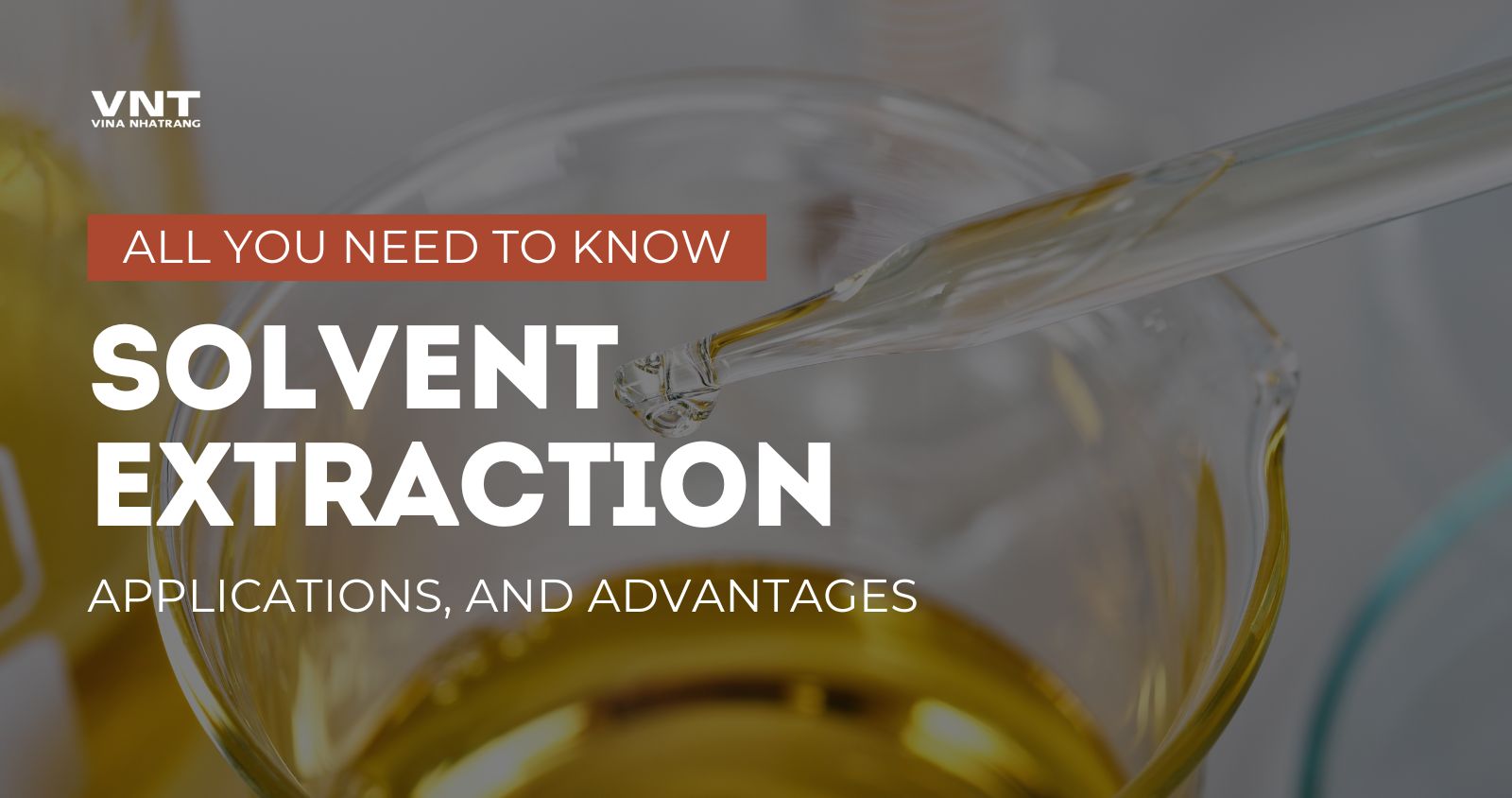The solvent extraction method is a widely used separation technique in various industries, including pharmaceuticals, metallurgy, food processing, and environmental sciences. It is a process that involves separating a desired compound from a mixture using a suitable solvent. This method is based on the principle of differential solubility, where the target substance dissolves more readily in one solvent than in another.
In this article, we will explore the principles, types, applications, advantages, and limitations of the solvent extraction method. Additionally, we will discuss its role in industries and how it contributes to sustainable and eco-friendly separation processes.
What is Solvent Extraction?
The solvent extraction method, also known as liquid-liquid extraction (LLE), is a technique used to separate components based on their solubility in two immiscible liquids. One liquid is typically aqueous (water-based), while the other is organic (solvent-based).
This process relies on the principle that different compounds exhibit varying degrees of solubility in different solvents. By carefully selecting an appropriate solvent, one can selectively dissolve and extract a specific compound while leaving behind other impurities.
Key Concepts in Solvent Extraction:
- ✔ Solubility Principle: Different substances dissolve to different extents in different solvents.
- ✔ Immiscibility: The two solvents used in extraction should not mix (e.g., water and hexane).
- ✔ Partitioning: The target substance moves from one phase to another, depending on its relative solubility.
Real-World Examples of Solvent Extraction:
✅ Metal Refining: Copper, uranium, and rare earth metals are extracted from ore solutions.
✅ Food Industry: Vegetable oils are extracted from seeds using hexane.
✅ Pharmaceuticals: Medicinal compounds are purified using solvent-based extraction techniques.
Principles of Solvent Extraction
The solvent extraction process is governed by several fundamental principles that ensure efficient separation:
1. Partition Coefficient
The partition coefficient (K) represents the ratio of a substance’s solubility in two immiscible liquids. It is mathematically expressed as:
K = Corganic / Caqueous
Where:
- C_organic is the concentration of the compound in the organic phase.
- C_aqueous is the concentration of the compound in the aqueous phase.
A higher partition coefficient means the substance prefers the organic phase, making extraction more efficient.
2. Selectivity
A good solvent should:
✔ Dissolve only the target compound.
✔ Exclude impurities and other unwanted substances.
✔ Exhibit minimal reactivity with the extracted compound.
3. Solvent Immiscibility
The two liquids must not mix to ensure clear phase separation. Commonly used solvent pairs include:
✔ Water & Hexane
✔ Water & Chloroform
✔ Water & Ethyl Acetate
4. Equilibrium Distribution
The efficiency of the process depends on the equilibrium established between the two phases. The extraction is optimized by:
✔ Adjusting pH levels.
✔ Controlling temperature and agitation.
✔ Using multiple extractions to enhance yield.
Types of Solvent Extraction Methods
Different industries use various solvent extraction techniques depending on the nature of the compound being extracted and the desired purity level. The four main types are:
1. Batch Extraction
✔ A simple single-stage process.
✔ Solvent and feed solution are mixed in a vessel.
✔ Allowed to settle for phase separation.
✔ Suitable for laboratory-scale extractions.
2. Continuous Extraction
✔ Automated process used in industrial applications.
✔ Feed solution flows continuously while fresh solvent is added.
✔ Used for oil extraction from seeds, metal purification.
3. Counter-Current Extraction
✔ Multiple extraction stages improve efficiency.
✔ The solvent and feed solution move in opposite directions.
✔ Increases purity and reduces solvent usage.
4. Supercritical Fluid Extraction
✔ Uses supercritical CO₂ instead of conventional solvents.
✔ Used for decaffeinating coffee, extracting essential oils.
✔ Environmentally friendly and leaves no toxic residue.
Solvent Selection Criteria
Choosing the right solvent is crucial for effective extraction. Several factors influence solvent selection:
| Criteria | Description |
|---|---|
| Selectivity | Should dissolve only the target compound while leaving impurities. |
| Immiscibility | Should not mix with the other phase (aqueous or organic). |
| Boiling Point | Should be easy to evaporate for solvent recovery. |
| Toxicity | Should be non-toxic, especially for food and pharmaceutical applications. |
| Cost | Should be economical for large-scale use. |
| Environmental Impact | Should have minimal ecological impact and be easy to dispose of. |
Commonly Used Solvents in Solvent Extraction:
✅ Water – Used for extracting water-soluble compounds.
✅ Hexane – Used in oil extraction from seeds.
✅ Chloroform – Used for pharmaceutical extractions.
✅ Ethyl Acetate – Common in food and fragrance industries.
✅ Supercritical CO₂ – A green alternative to traditional solvents.
Example: In the food industry, hexane is used to extract soybean oil because it effectively dissolves oils but not proteins or carbohydrates.
5. Steps in the Solvent Extraction Process
The solvent extraction process follows several critical steps:
Step 1: Preparation of the Mixture
✔ The feed solution is prepared by dissolving or suspending the target compound in water or another medium.
Step 2: Addition of Solvent
✔ The selected solvent is added to the mixture.
✔ The mixture is agitated or stirred to enhance contact between phases.
Step 3: Phase Separation
✔ The mixture is allowed to settle, forming two distinct layers.
✔ Organic Layer: Contains the dissolved target compound.
✔ Aqueous Layer: Contains unwanted substances.
Step 4: Recovery of Extracted Compound
✔ The solvent is evaporated or chemically treated to separate the extracted compound.
✔ This step ensures high-purity yield.
Step 5: Solvent Recycling
✔ To improve sustainability, solvents are often recovered and reused.
✔ This reduces waste generation and production costs.
6. Applications of Solvent Extraction
Solvent extraction is extensively used in different industries:
- Pharmaceutical Industry: Used for drug purification, such as the extraction of antibiotics, alkaloids, and essential oils.
- Metallurgy: Used in extracting metals like uranium, copper, and rare earth elements from ores.
- Food Industry: Extraction of vegetable oils from seeds (e.g., soybean, sunflower). Decaffeination of coffee and tea.
- Environmental Applications: Used in wastewater treatment to remove contaminants. Extraction of pollutants from industrial waste.
- Perfume and Essential Oils Industry: Used to extract fragrances and essential oils from plants.
7. Advantages of Solvent Extraction
Solvent extraction offers numerous benefits:
- High Purity: Provides high selectivity, leading to purer end products.
- Efficiency: Can extract large volumes of material efficiently.
- Scalability: Can be adapted for both laboratory and industrial-scale operations.
- Solvent Recycling: Many solvents can be recovered and reused, making the process cost-effective.
- Minimal Thermal Degradation: Unlike distillation, solvent extraction does not involve high temperatures, preventing decomposition.
8. Limitations of Solvent Extraction
Despite its advantages, solvent extraction has some limitations:
- Solvent Toxicity: Some solvents are hazardous and require careful handling.
- Emulsification Issues: In some cases, emulsions can form, making phase separation difficult.
- Environmental Concerns: Improper disposal of solvents can cause pollution.
- High Solvent Costs: Some high-purity solvents are expensive.
- Energy Consumption: Solvent recovery requires additional energy input.
9. How to Improve the Solvent Extraction Process?
To enhance efficiency and sustainability, consider the following improvements:
- Use greener solvents (e.g., bio-based solvents).
- Optimize extraction conditions (temperature, pH, agitation).
- Implement solvent recovery systems.
- Use advanced extraction techniques, such as supercritical fluid extraction.
10. Future Trends in Solvent Extraction
The field of solvent extraction is evolving with new innovations:
- Eco-friendly solvents: Developing biodegradable solvents to reduce environmental impact.
- Automation and AI: Implementing AI-driven optimization for better efficiency.
- Nanotechnology: Using nano-solvents for enhanced selectivity.
Frequently Asked Questions (FAQs)
1. What is the difference between solvent extraction and distillation?
Solvent extraction separates compounds based on solubility differences, while distillation relies on boiling point differences.
2. Is solvent extraction safe for food products?
Yes, but only food-grade solvents such as ethanol are used.
3. Can solvent extraction be used for water purification?
Yes, it is used to remove contaminants from wastewater.
4. What is the best solvent for metal extraction?
Common solvents for metal extraction include kerosene-based solvents and organic acids.
5. How does solvent extraction contribute to sustainability?
By enabling solvent recycling and reducing energy consumption, it minimizes environmental impact.
6. What industries benefit the most from solvent extraction?
Pharmaceuticals, metallurgy, food processing, and environmental sciences are the major industries utilizing solvent extraction.
Conclusion
The solvent extraction method is a powerful and versatile separation technique widely applied across industries. Its ability to provide high purity, efficiency, and scalability makes it an invaluable tool in modern chemistry and industrial applications. While it has some challenges, advancements in eco-friendly solvents and automation are making it more sustainable and efficient.
For industries looking to enhance their separation processes, solvent extraction remains a cost-effective, reliable, and highly efficient choice.




